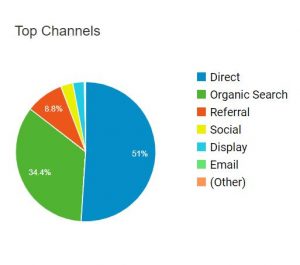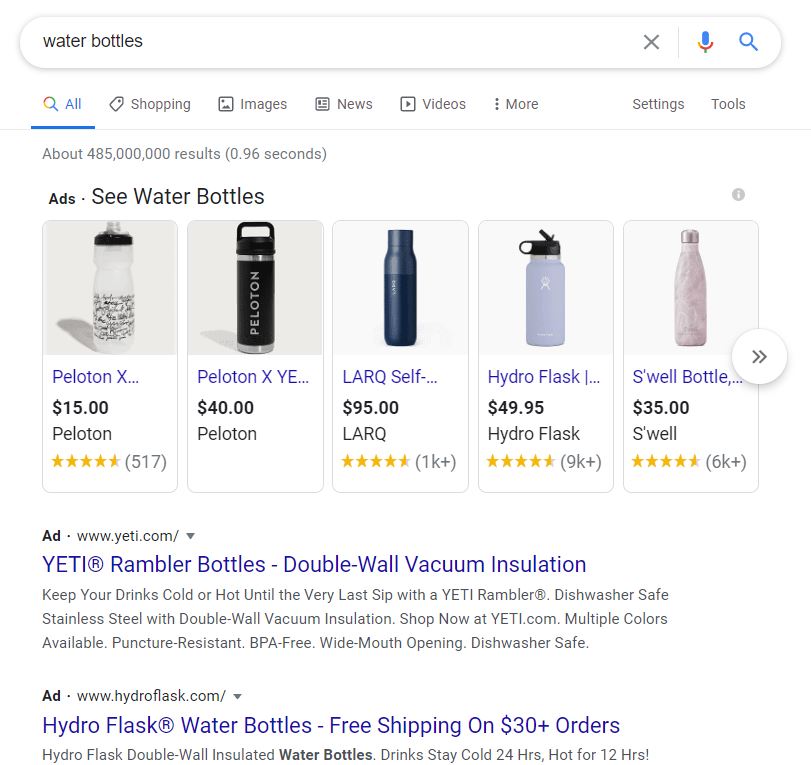One of the main goals of marketing efforts is to increase traffic to websites. More website traffic means more relevance to google and, more importantly, an increase in conversions or sales.
But what exactly is traffic? Why does it matter and how do you get more of it?
Let’s dive in…
What is “traffic”?
Traffic refers, simply, to the number of visitors that visit your website or a specific webpage. Marketing efforts, many times, are focused on increasing the number of visits to help increase sales or qualified leads.
Not all traffic is good traffic. Sometimes people visit a webpage and leave, or “Exit”, soon after. While tracking website metrics, Account Managers also look at things like the amount of time on a page, and how many pages a user visits. This is done to understand if that user is actually engaging with the content.
Pages that are more engaging convert more.
At IQnection, we focus on creating content that is built around this value. We do this by creating mission-driven content and user intent optimized content.
Together these build an interesting and helpful experience for our client’s customers that lends itself to increase sales or leads.
What types of traffic are there?
There are four main types: Organic, Paid, Direct, and Referral Traffic.
Let’s dive into them in more detail…
Organic Traffic
What is organic traffic?
Organic traffic are visits to your website gained through the organic search results.
What are organic search results?
Organic search results are the results that show for a query below paid “ads” in Google.

In SEO, the goal is to have our clients on the first page of search results as close to the top as possible.
Why is organic traffic important?
It has the best ROI of all types of web traffic in marketing. While Paid advertising typically only works while you’re paying for it, organic traffic can continue to grow over time.
How long does it take to get?
Organic traffic takes longer than Paid. Depending on your SEO efforts, organic growth can take from 2 to 6 months.
Learn more about why it takes so long (and why it’s worth the wait) here.
What percentage of my visits should be organic?
Aim for at least 16% with the goal of it growing over time.
As you continue to optimize your website and develop helpful content around important keywords you’ll see a natural growth in website visits – and sales.
How do I know if I have organic traffic?
By checking your Google Analytics!
Here’s a quick guide to checking your traffic in Google Analytics:
 Log in!
Log in!- On the left, under reports, find and click “Acquisition”. A menu will dropdown.
- Select “overview”
- There will be a pie chart that shows your “Top Channels” for a given time range. On the upper right you’ll see a date range, click on it to adjust.
Track this metric month by month and, with a solid SEO strategy, you’ll see growth over time.
How do I get more organic visits?
By developing a strong SEO strategy, or working with an Agency that will, you’ll see an increase in visits to your website.
The strategy should focus around:
- Developing user-intent focused content for relevant keywords like blogs, videos, and infographics
- Building a uniform presence online with social media, citation management, and review management
- Optimizing content and webpages with on-page and technical SEO
If you need help, let’s chat!
Organic traffic requires effort to build but will help your company succeed long past the life of a paid advertisement.
Paid Traffic
What is paid traffic?
Paid traffic comes from clicks on advertisements you’ve bought that link to your website. This is typically called Pay Per Click (PPC) Marketing. PPC marketing is great for fast results but generally requires constant monitoring. Like many things it only works while you pay for it.

PPC is typically done with Google Ads. Your IQnection Account Manager will find relevant keywords.
Google Ads is set up like an auction. They set a price for keywords and we set a maximum bid.
Once someone types a relevant keyword into Google, Google takes action! They evaluate the maximum bid, compare the relevancy of your ad compared to your competitors, and then give it a Quality Score. Once they figure out which is the best fit – they display the “winning” ad.
What is a Quality Score?
Per Google, a Quality Score is “an estimate of the quality of your ads, keywords, and landing page. Higher quality ads can lead to lower prices and better ad positions.”
Does paid traffic work?
Yes!
That being said, it may not work for your budget.
In PPC advertising, you pay each time someone clicks on an ad. “Someone” could be anyone – that means it could be an employee, bot, competitor, or qualified lead.
Paid Traffic vs Organic Traffic
Both are good for your business!
PPC is automated through platforms like Google Ads whereas Organic Traffic is developed through content creation and monitoring SEO.
Organic Traffic is considered “evergreen”. That means that once it exists in the world then it’ll continue to bring traffic to your site. Comparatively, PPC only drives traffic while you’re paying for it. Once you stop – traffic stops.
Organic visits are like a snowball – it builds over time. In contrast, PPC is relatively immediate.
Direct Traffic
What is direct traffic?
Direct traffic describes when visitors land on your website by clicking on a link to your website. For example, if someone has your website bookmarked or puts your URL in their browser address bar they are considered direct traffic.
For a full explainer check out this Moz blog.
Referral Traffic
What is referral traffic?
Referral traffic is when someone clicks a link to your site while on another site.
For example, if you clicked the link for the Moz blog (above) Moz received referral traffic from your visit.
Why is it important?
Referral visits are the product of having websites link to you. These links are called backlinks.
Backlinking helps boost your website’s authority. Google loves this!
Backlinks, like clicks, act as votes. The more backlinks you have the more Google “thinks” that your website must have high-quality helpful information. As a result, you’ll rank higher.
Not all links are good links though. Years ago, SEO strategists would capitalize on this and put links for websites everywhere. The idea was quantity over quality.
Google realized this and updated their algorithm. Now the rule is quality over quantity. Google knows that if you’re a dog groomer it doesn’t make sense to have your website linked to a nail salon’s website.
How do I increase referral visits?
By building high quality, relevant backlinks!
Learn more about building a backlinking strategy here.
Increasing the number of visits to your website is at the core of almost all digital marketing strategies. By understanding the different types of traffic you’ll be able to key into ways to improve your marketing efforts.
Don’t stop here, keep reading: Learn how to optimize your blog content for SEO.










